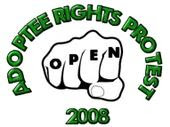 OTAGO DAILY TIMES
OTAGO DAILY TIMESJune 19, 2008
By Sarah Harvey
In 1975, Dina Shannon, of Gore, was 20 years old, unmarried and pregnant.
She gave her child up for adoption as she felt she had no other choice.
That decision haunts her more than 30 years later.
Her baby was one of 3321 adopted nationally in 1975.
In 2007, just 60 babies were adopted nationally.
The figures are the lowest in 30 years and as waiting lists for adopted babies stretch past 300 couples, women in "crisis" pregnancies are being encouraged to consider adoption rather than abortion.
Mrs Shannon, a University of Otago social work lecturer, said the low number of adoptions was because pregnant women now had choices and government support if they kept the child.
Either way, the choice was a personal one, she said.
"You are going to lose something either way.
You are either going to lose a child, or if you keep the child you are going to lose a part of the life you once had."
The fall in adoptions has been matched by an increase in abortions, which is cited alongside the domestic purposes benefit and society's better acceptance of single motherhood as reasons for the trend down.
Statistics New Zealand figures showed the number of women terminating their pregnancies increased from 5945 in 1980 to 18,380 in 2007.
The general abortion rate in 2007 was 20.1 abortions per 1000 women.
Mrs Shannon, who now lives in Palmerston, said when she became pregnant she may as well have committed murder, as it was viewed in the same light.
"The choice [for adoption] was made partly by my parents and partly by society.
I didn't know what being a mother would involve and if I could look after a baby.
"I saw some social workers but they did not tell me what my rights were," she said.
She was sent to a farm in Ranfurly where single women went to have their babies away from the public eye.
The mother of the baby's father offered her money to term-inate the pregnancy.
"It was strange. I can remember my girlfriend's mother going on about [the pregnancy] but her daughter was in the same situation - it was just that she was getting married."
Mrs Shannon said the trauma of the birth and having her baby taken away left her with a memory blank.
She even had to battle to see her newborn son.
The fight has continued today and the lack of contact with her son continues to haunt Mrs Shannon.
She has met her son once but he did not know he was serving a cup of coffee to his mother.
The situation was set up by the adoptive father and for Mrs Shannon it was "terrible".
She knows where her son is and what he is doing but he refuses contact.
To deal with her issues and push for a change in the adoption laws, Mrs Shannon founded the Dunedin Adoption Support Group in 1979.
It achieved major change with the Adult Adoption Act of 1985 which meant people who were adopted could see their original birth certificate and birth parents could access information on their child.
Mrs Shannon said up to 20 people still come to support group meetings.
Most are dealing with issues after having been reunited with their parents or child.
Adoption was not a black-and-white issue.
It was a personal choice and a difficult one for women to make, she said.
"I think society still sees it very much as a positive thing. Many think open adoption is the answer, but I think children will still feel abandoned."
For many people, it can disrupt their formative years as they experience feelings of loss and abandonment.
"I can always remember an adoptee coming to me saying he had a loving adopted home but had always felt like he didn't fit in.
The family all played sport and he loved mathematics. If he had grown up having some sort of contact with the birth family, he would have known they were a family who loved numbers," she said.
Adoption
What is adoption?
• Adoption is the legal transfer of all parental rights and responsibilities from a child's birth parents to the adoptive parents. When this process is completed, the child's legal status becomes as if the child had been born to the adoptive parents.
The procedure
• Prospective parents who contact Child, Youth and Family are checked to see whether they are suitable.
• They must be New Zealand residents, with a clean criminal record and be in good health.
• Classes are held for prospective adoptive parents where they learn what to expect from the adoption.
• Many people at the meetings are in the same situation, having explored all other options for having a child of their own.
• Social workers are intimately involved, and parents know once they are on the waiting list it is just a matter of waiting.
• As few as three babies in the Otago region are put up for adoption each year.
• The birth mother chooses the parents for her child.
• The choice of adopting the baby is the birth mother's right, and social workers tend to favour keeping the baby with its birth mother.
International adoption
• People must apply to Child, Youth and Family where they undergo the same checks as for adopting a New Zealand child. They attend three days of education courses.
• Organisations such as Inter Country Adoption New Zealand will organise the paper work for what can be a lengthy process.
• Countries such as Russia, Lithuania, Thailand, the Philippines and India are accepting inter-country adoptions. This changes frequently with new legislation and the availability of orphans.
• All children in inter-country adoptions are wards of the state and if not adopted will often live in orphanages until they turn 15.
• Inter-country adoptions are expensive. The major cost is for travel, translators and facilitators in the country concerned.
• Parents are more or less guaranteed a child at the end of the adoption process, unlike national adoption.
Link to article








1 comment:
Interesting blog as for me. It would be great to read a bit more concerning that matter.
BTW check the design I've made myself Young escorts
Post a Comment